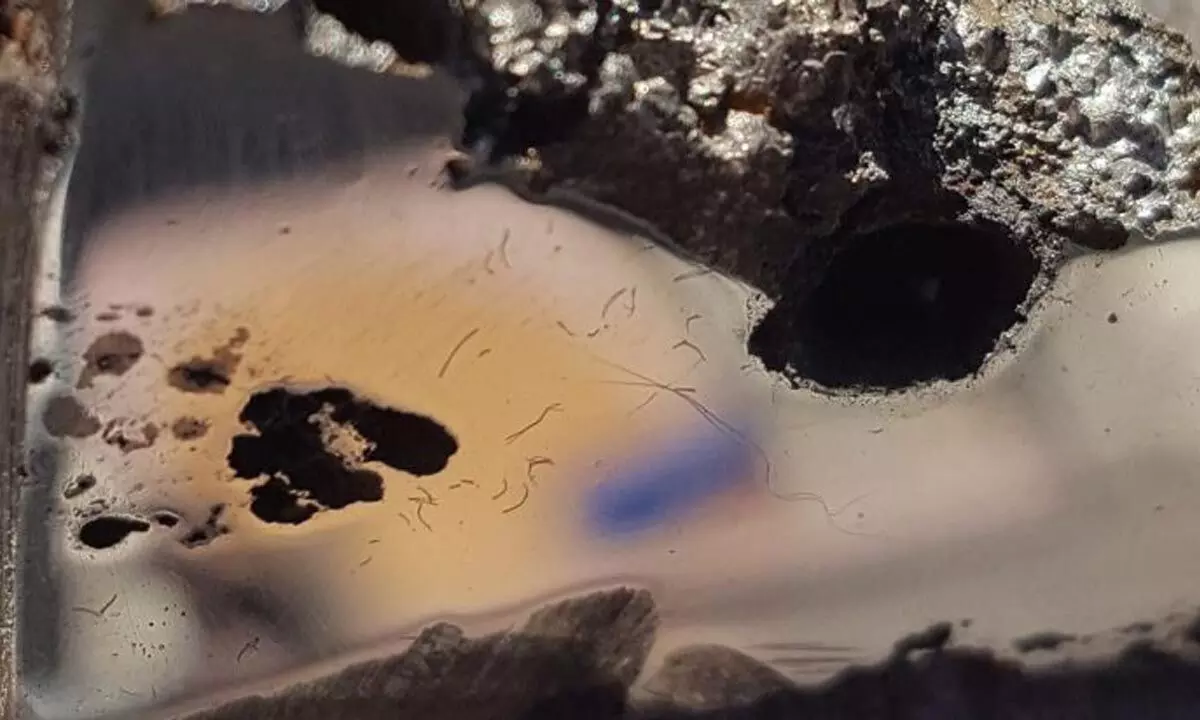Asteroid That Hit Earth Found To Contain Two Minerals Never Before Observed In Nature

Asteroid That Hit Earth Found To Contain Two Minerals Never Before Observed In Nature
- Massive space rock fragment found in Somalia was analysed, and it contained elements never before observed in nature.
- This study could give scientists some significant hints as to the creation of asteroids and meteorites.
Massive space rock fragment found in Somalia was analysed, and it contained elements never before observed in nature. Two new minerals have been examined and identified, while a possible third is currently under investigation by the International Mineralogical Association.
This study could give scientists some significant hints as to the creation of asteroids and meteorites. The minerals have been identified as elaiite and elkinstantonite, and planetary geologist Chris Herd of the University of Alberta in Canada made the discovery announcement on November 21 at the Space Exploration Symposium.
Herd stated that whenever you uncover a new mineral, it means that the real geological conditions, the chemistry of the rock, was different than what's been documented before. This is what makes it exciting: This specific meteorite has two newly discovered minerals that have been officially described by science.
The rock in issue, a 15.2-ton boulder that claims to be the ninth-largest space rock ever discovered on Earth's surface, was only recently confirmed as a meteorite. It was found partially immersed in sand in a limestone-rich valley in Somalia close to the town of El Ali.
It's unclear when the rock fell from the sky, but the people gave it the name "Nightfall," remembered it in songs, dances, and folklore for at least five to seven generations, and used it as an anvil for sharpening knives. The odd, pitted rock captured the attention of opal prospectors in the area in 2019, who struck off several samples and sent them to Herd and the University of Alberta's Meteorite Collection for examination and classification.
Together with scientists from the California Institute of Technology and the University of California, Los Angeles, Herd quickly identified Nightfall as an iron meteorite from the IAB complex and gave it the official name El Ali in honour of the nearby town. The iron IAB complex classification contains roughly 350 meteorites, and they are distinguished by, among other things, a primarily iron-nickel composition, with inclusions of silicates like little raisins in a fruitcake. They're believed to have developed through impact-induced melting on an iron asteroid.
Herd and his team had to analyse the chemical composition of the meteorite in order to categorise it, and this is where things changed. Herd sought the assistance of University of Alberta mineralogist Andrew Locock, who has been involved in describing other new minerals, because some of the inclusions appeared to have an odd texture and composition.
The identification and classification of a third potential new mineral is still ongoing. Additionally, researchers are putting the finishing touches on a paper that will outline the processes that could produce these minerals and what that means for how the El Ali meteorite was created. Furthermore, the scientists are attempting to locate it in the hopes that they can collaborate with meteorite dealers and collectors to acquire more pieces of the rock and carry out additional research using them.













